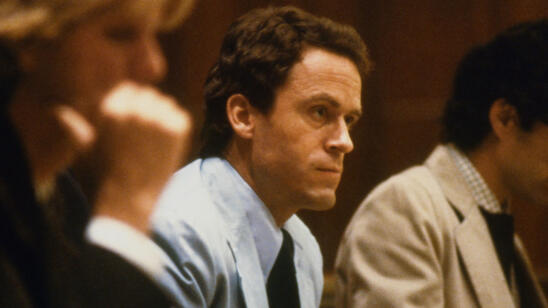Ted Bundy was one of the most prolific and notorious serial killers in American history. He confessed to murdering at least 36 women, in at least six states, most during the 1970s. Some estimates put the number of his victims as high as 100.
But to many people, he was also one of the sexiest serial murderers.
Attractive, university educated, with a degree in psychology and some time in law school, he sought out most of his victims among college students, rather than the marginalized or vulnerable poor so often targeted by serial killers. He often relied on his good looks and charm to engage and fool these women, rather than emerging suddenly from the shadows. His self-confidence and fearlessness after capture—he twice escaped custody—made him a kind of media anti-hero. His murder trial in 1979, in which he famously mounted his own defense, was the first in the U.S. to be fully televised.
But his crimes were horrific: He attacked his victims with a blunt instrument, beating them unconscious before strangling them to death. He sexually assaulted women before and after death, decapitated some and kept their heads as trophies. In some cases, he returned to victims’ decaying corpses to continue his sexual assaults.
When Bundy was apprehended, he decided to conduct his own defense, again trusting in the power of his personality. Though he was convicted and sentenced to death, the presiding judge’s last words in the case are an indication of Bundy’s charisma: “You’d have made a good lawyer, and I would have loved to have you practice in front of me, but you went another way, partner. Take care of yourself. I don’t feel any animosity toward you.”
After that conviction, Bundy stood trial for another murder—for which he was also found guilty—and parlayed the proceedings into a way to marry a former girlfriend, Carol Anne Boone, whom he had called as a character witness. While on death row, he received a number of journalists and criminologists who took a more or less prurient interest in the details and origins of his crimes.
From a law-enforcement perspective, Bundy was also something new. No killer had ever been known to rove so widely across the United States in pursuit of victims, or to evade capture. Because a centralized list of potential serial homicides across states did not yet exist, police in different states were for a time unaware that they were all in search of one man, whose crimes had a remarkably similar pattern.
Born Theodore Robert Cowell (he was later given his stepfather’s name, Bundy) in 1946 at a home for unwed mothers in Burlington, Vermont, Bundy never knew for sure who his father was. He was raised by his grandparents, believing until his teens that his mother Louise was his sister. Even after she revealed her true identity, Louise remained evasive about his father’s name. It has been suggested that Bundy’s grandfather, a sadistic and abusive man, may have in fact been his biological father.
The Bundys moved to Washington state after his mother’s marriage, and Bundy attended university in Tacoma, before transferring to the University of Washington in Seattle. It was while he was volunteering at a suicide hotline in Seattle that Bundy met his future biographer Ann Rule, whose book, The Stranger Beside Me, did much to humanize its subject for a wider audience. As Rule remarked, in retrospect Bundy took his duties as a volunteer with unlikely seriousness: “Ted Bundy took lives, he also saved lives.”
It was between 1973 and 1978 that Bundy committed most of his known homicides, targeting mostly attractive women with long, dark hair, students at different colleges across the Northwest. In 1974 alone, he killed 14 times in Washington, Oregon and Utah. The following year he carried out another series of murders in Colorado.
He was arrested in 1975 and first convicted of kidnapping charges in Utah, but twice managed to escape when transferred to face trial in Colorado for murder. After the second of his escapes he traveled to Florida, where he carried out another series of murders. On January 15, 1978 in Tallahassee he broke into a sorority house at Florida State University and attacked four women. He killed two, two survived and Bundy went on to attack a fifth woman that night.
His last victim was 12-year-old Kimberly Leach, a high-school junior in Lake City, Florida, whom he kidnapped, raped and murdered in February 1978. He was captured driving a stolen car a week later.
Bundy’s long fight to avoid the death penalty kept his name in the public eye for years, and kept up a stream of visitors to his cell. He claimed that his addiction to violent pornography was a prime cause of his crime.
He continued to give details of other murders in the hope of forestalling his execution, but eventually exhausted all appeals and died in the Florida electric chair on January 24, 1989. The true number of his victims will never be known.
Related Features:
What Was Ted Bundy’s Execution Like?
The 5 Most Bizarre Moments from Ted Bundy’s Murder Trials
Ted Bundy’s Childhood: Lonely Boy to Window Peeper to Serial Killer
Why Are Some Women Sexually Attracted to Serial Killers?
Why Do Serial Killers Typically Abuse Animals at a Young Age?
Do All Serial Killers Have a Victim ‘Type’?


